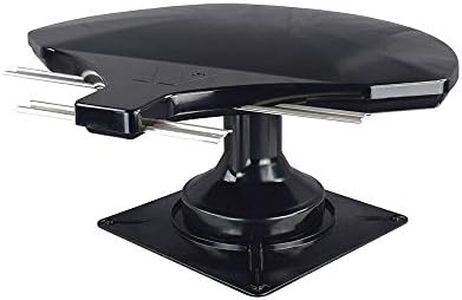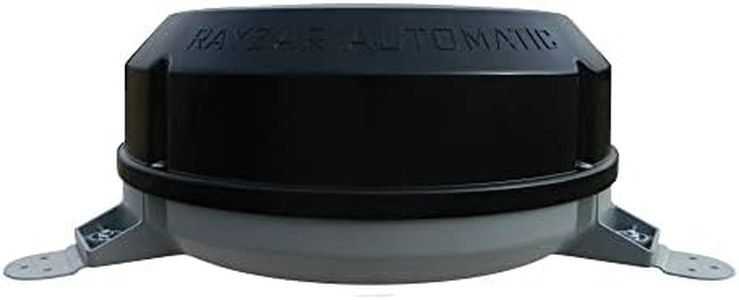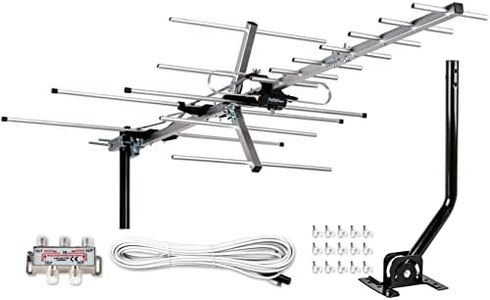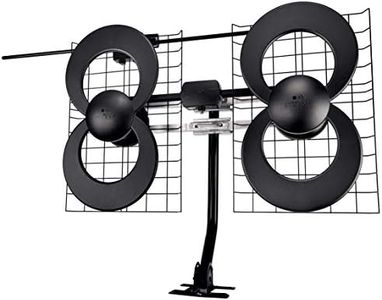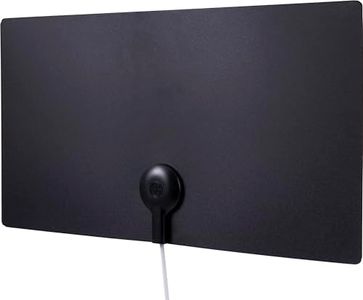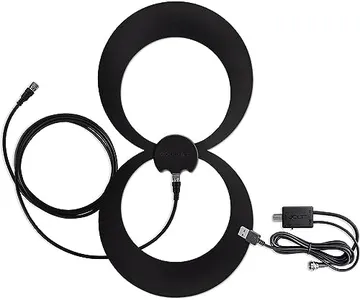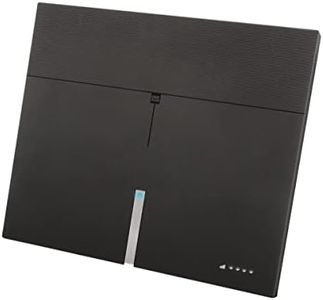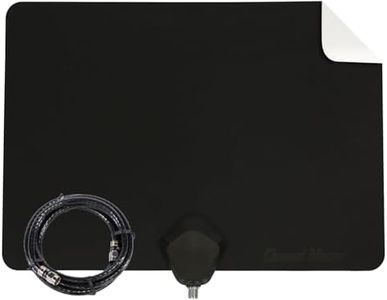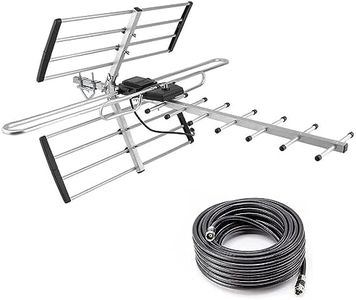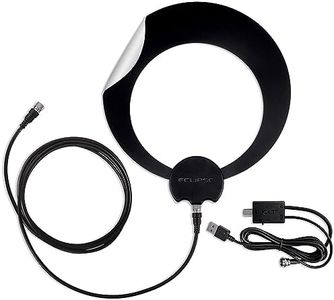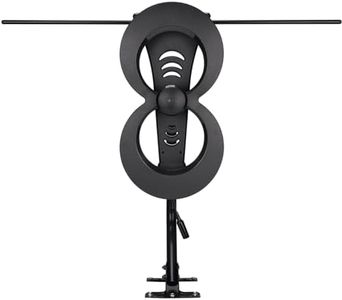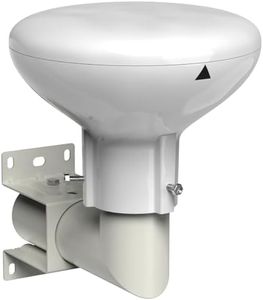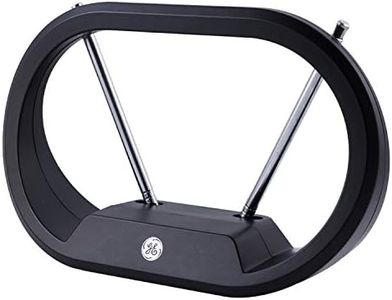We Use CookiesWe use cookies to enhance the security, performance,
functionality and for analytical and promotional activities. By continuing to browse this site you
are agreeing to our privacy policy
10 Best TV Antennas
From leading brands and best sellers available on the web.By clicking on a link to a third party's website, log data is shared with that third party.
Buying Guide for the Best TV Antennas
Choosing the right TV antenna can greatly improve the quality of your television reception and expand the number of channels you can watch. The most important thing to remember is that picking an antenna should be based on your location, the type of channels you want, and where you plan to install it. Understanding a few key specifications will help you match your needs with the right antenna, ensuring you get the best possible performance without unnecessary complexity.Antenna Type (Indoor vs. Outdoor)Antenna type refers to whether the antenna is designed to be used inside your home (indoor) or mounted outside (outdoor). Indoor antennas are usually smaller, easier to set up, and are best for areas near broadcast towers with strong signal. Outdoor antennas are larger, are installed on rooftops or walls, and are better for picking up signals from farther away or in areas with obstacles. To choose, think about how far you are from the nearest TV towers and any potential obstacles like buildings or hills. If you live close to towers, an indoor antenna may be enough. If you're further away or have many obstructions, consider an outdoor antenna.
RangeThe range of an antenna indicates how far it can pick up signals from broadcast towers, typically measured in miles or kilometers. Antennas are marketed with different range ratings, such as short-range (up to 25 miles), medium-range (25 to 60 miles), and long-range (over 60 miles). However, real-world performance can vary depending on obstacles and weather. To pick the right range, find out how far your home is from the TV transmitters you want to receive signals from. If you're in or near a city, a short-range antenna may be sufficient. If you're in a suburban or rural area with towers farther away, look for a medium or long-range antenna.
Signal Direction (Directional vs. Omnidirectional)Signal direction describes whether the antenna receives TV signals from one direction (directional) or from all around (omnidirectional). Directional antennas are best when all nearby stations are located in the same general direction; they need to be aimed toward the towers but usually provide a stronger and more focused signal. Omnidirectional antennas can pick up signals from multiple directions, making them a good choice if stations are spread out. To decide, check a map of your local broadcast towers. If they're grouped together, directional is better; if they're spread around, go with omnidirectional.
Antenna Size and DesignAntenna size and design impact where you can place the antenna and how it blends with your space. Larger antennas usually pick up signals better, especially for outdoor use or weak signals, while compact designs work well indoors or where aesthetics matter. Consider where you'll put the antenna—in a discreet spot indoors or mounted outside—and how much space you have. Match the size to your space and your need for performance.
Amplified vs. Non-AmplifiedSome antennas include an amplifier to boost weak signals, which can help if you're far from towers or have obstacles blocking your signal. Amplified antennas plug into a power source to increase strength, while non-amplified ones do not. However, amplifiers can sometimes also increase interference. Decide based on your reception quality: if you have issues with weak or unstable signals, an amplifier might help; if signals are already strong, a non-amplified antenna is likely sufficient.
Frequency Bands Supported (UHF, VHF)TV signals are broadcast in two main frequency bands: VHF (Very High Frequency) and UHF (Ultra High Frequency). Some antennas only support UHF, while others support both. Knowing which channels you want to watch and which frequency they use is important. To make an informed choice, look up which local channels are broadcast in VHF or UHF in your area. If you want access to all available channels, get an antenna that supports both frequency bands.

